Megjegyzések / Kérdések (56)
![]() Carlene Dawson írta:
Carlene Dawson írta:
Hi, I'm afraid I'm not the most experienced knitter! I am at the point of beginning the bind off and ear flaps. The pattern says "Round beg 10-10-8 (8-7) sts before mid back". Can you tell me what "Round" these stitches means? Thanks so much for your help! Carlene
12.05.2025 - 16:25A DROPS Design válasza:
Dear Carlene, round is "the round". You are displacing the beginning of the round to 10-10-8 (8-7)sts before the middle of the back side of the hat. So it is: The round begins 10-10-8 (8-7) sts before the middle of the back side. Happy knitting!
18.05.2025 - 13:54
![]() Martyna írta:
Martyna írta:
Czy można zacząć ten wzór od razu wykonywać na drucie z żyłka, początek magic loop?
13.02.2025 - 15:37A DROPS Design válasza:
Witaj Martyno, jak najbardziej. Pozdrawiamy!
14.02.2025 - 09:12
![]() Pauline írta:
Pauline írta:
Au moment de continuer avec la circulaire pour le bonnet ,je n'ai pas fermé en rond , je suis rendue à rabattre .Est ce correct ?
18.01.2025 - 03:04A DROPS Design válasza:
Bonjour Pauline, je ne suis pas sûre de bien visualiser à quelle étape vous en êtes, est-ce que cette leçon pourrait vous aider? Elle montre comment tricoter ce bonnet précisément. Bon tricot!
20.01.2025 - 07:31
![]() Natalia Piron írta:
Natalia Piron írta:
„ Następnie przer. nausznik w tą i z powrotem przez 25-27-33 (35-39) ost. o. następująco: dalej przer. ściągaczem 1 o.p./1 o.l., W TYM SAMYM CZASIE zamknąć 1 o. na pocz. każdego rzędu z każdej strony, w sumie 9-10-13 (14-16) razy = 7 o. ” Jeśli mam zamknąć 1 oczko na początku każdego rzędu 13 razy to zamykam 13 oczek, dlaczego według powyższego zamykam 26 oczek? 33-26=7
20.12.2024 - 23:01A DROPS Design válasza:
Witaj Natalio, gdy zamykasz 1 oczko 13 razy na początku każdego rzędu z każdej strony to zamkniesz łącznie 26 oczek, po 13 z każdej strony. Pozdrawiamy!
23.12.2024 - 10:13
![]() Andrea írta:
Andrea írta:
Warum werden vor dem Bündchen noch Maschen aufgenommen? Die Mütze soll doch an dieser Stelle eher wieder etwas enger werden.
05.01.2024 - 11:23A DROPS Design válasza:
Liebe Andrea, man braucht mehr Maschen für den gleichen Umfang um Bündchen mit den kleineren Nadeln zu stricken, deshalb muss man zunehmen. Viel Spaß beim stricken!
05.01.2024 - 15:35
![]() Ute írta:
Ute írta:
Hallo, wenn ich bei der Ohrenklappe 9x in jeder Reihe beidseitig eine Masche abnehme, habe ich nur 9 Reihen gestrickt und das sind keine 6 cm. Muss ich dich nur in jeder 2. Reihe abnehmen?
15.12.2023 - 17:42A DROPS Design válasza:
Liebe Ute, man wird 1 Masche am Anfang jeder Reihe beidseitig 9 Mal abnehmen, dafür braucht man 18 Reihen (9 Hin-Reihe + 9 Rückreihe = 9 Maschen beidseitig abgenommen), mit 28 Reihen. = 10 cm sind diese 18 Reihen ca 6 cm. Viel Spaß beim stricken!
18.12.2023 - 08:01
![]() Ute írta:
Ute írta:
Hallo, ab werden die 11 cm gemessen, ab Anschlag oder ab den letzten Zunahmen ?
13.12.2023 - 21:25A DROPS Design válasza:
Liebe Ute, es wird ab Anschlag gemessen - siehe auch diese Lektion. Viel Spaß beim stricken!
14.12.2023 - 08:28
![]() NADJA írta:
NADJA írta:
Hallo Hallo, hab eine Frage ...möchte die Mütze von 0-3 M. Stricken. Nur wie schlage ich 4,8 Maschen an ? Muss ich aufrunden also 5 Maschen anschlagen?\r\nLG
09.08.2023 - 20:24A DROPS Design válasza:
Liebe Nadja, in die erste Größe schlagen Sie 8 Maschen mit den Nadeln Nr 4 an. Viel Spaß beim stricken!
10.08.2023 - 09:42
![]() Rika írta:
Rika írta:
Thank you for this pattern and step by step Tutorial. I knitted my 1st baby hat. Especially the start, never knitted with 4 double pointed needles,
27.07.2022 - 01:04
![]() Irene Motti írta:
Irene Motti írta:
Tipp zur Ohrklappen-Verschönerung: 1. M immer rechts stricken, letzte M nur abheben, dadurch entsteht ein hübscher Maschenrand. Abnahmen nur in Hinreihen mit 2.+3. M sowie vorvor- + vorletzter M, beim Zusammenstricken dominiert die rechte M, also je nach M-Kombi bzw. am Ende der Reihe (statt rechts) rechts verschränkt zusammenstricken, dafür die erste M zuvor abheben und drehen. In den Rückreihen keine Abnahmen, M stricken, wie sie erscheinen. Viel Spaß beim Nachstricken. :-)
20.11.2021 - 13:01
Sky High#skyhighhat |
|
|
|
|
DROPS SAPKA fülvédőkkel "MERINO EXTRA FINE" FONALBÓL.
DROPS Baby 20-9 |
|
|
TANÁCS A SZAPORÍTÁSHOZ: A szaporításhoz egy szembe két szemet kötünk. -------------------------------------------------- SAPKA: Körben kötjük a tetejétől lefelé. A kezdéshez szedjünk fel 8-10-13 (15-18) szemet a 4 mm-es kéthegyű kötőtű készletre. Hagyjunk elég fonalat a végén, hogy össze tudjuk a sapka tetejét húzni. Kössünk 1 kört harisnyakötéssel, UGYANAKKOR egyenletesen elosztva szaporítsunk 7-10-12 (15-17) szemet (LÁSD A FENTI TANÁCSOT A SZAPORÍTÁSHOZ). = 15-20-25(30-35) szem. Tegyünk 5 jelölőt a darabba úgy, hogy 3-4-5 (6-7) szem legyen közöttük. Folytassuk a kötést harisnyakötéssel, közben a második körben szaporítsunk egy-egy szemet minden jelölő mindkét oldalán. Ismételjük meg a szaporítást minden 2. sorban, összesen 6 alkalommal = 75-80-85 (90-95) szem. Váltsunk a 4 mm-es körkötőtűre. NE FELEDKEZZÜNK MEG A KÖTÉS MEGFELELŐ SZOROSSÁGÁRÓL! Folytassuk a kötést harisnyakötésel. Amikor a darabunk 11-12-13 (14-15) cm-es, egyenletesen elosztva szaporítsunk 25-26-29 (30-31) szemet (körülbelül minden 3. és 4. szem között készítsük a szaporításokat = 100-106-114 (120-126) szem. Váltsunk a 3-5 mm-es körkötőtűre, és folytassuk a kötést 1 sima, 1 fordított bordás mintával minden szemen. Amikor a bordás rész körülbelül 3 cm-es, láncoljuk le a szemeket a következőképpen: A kör a háta közepe előtt 10-10-8 (8-7) szemmel kezdődik. Láncoljunk le 21-21-17 (17-15) szemet (a sima szemeket simán a fordított szemeket fordítottan) (= háta közepe), csúsztassuk a következő 25-27-33 (35-39) szemet szemtartóra a fülvédőhöz, majd láncoljuk le a következő 29-31-31 (33-33) szemet (= homlok). Most kössünk oda-vissza az utolsó 25-27-33 (35-39) szemen a következő módon: Folytassuk az 1 sima/1 fordított bordás minta kötését. UGYANAKKOR, fogyasszunk 1 szemet minden sor elején, összesen 9-10-13 (14-16) alkalommal mindkét oldalon = 7 szem. A következő sorban láncoljuk le a maradék szemet (a sima szemeket simán, a fordított szemeket fordítottan). A fülvédő körül-belül 5-6-8 (8,5-10) cm-es. Kössük meg a másik fülvédőt ugyanilyen módon. Húzzuk össze a sapka tetejét, és varrjuk el a szálat. MEGKÖTŐK: Vágjunk le 2 db 75 cm-es fonalat és alaposan sodorjuk meg őket. Húzzuk át a megkötőt a fülvédő alsó csücskén, hajtsuk félbe, és hagyjuk újra összesodródni. Kössünk csomót a megkötő végére. Ismételjük meg a másik fülvédőnél. |
|
Elkészítette ezt a mintát?Akkor adja a képeihez a #dropspattern #skyhighhat tageket, vagy küldje be a képet a #dropsfan galériába. Segítségre van szüksége a modell elkészítéséhez? 19 tutorial videót találhat, és egy kérdés/felelek részt, és még többet, ha a mintát megkeresi a garnstudio.com oldalán. © 1982-2025 DROPS Design A/S. Minden jog fenntartca. Ez a documentim, az összes részével védelem alatt áll. A weboldalunkon többet olvashat arról, hogy mit tehet és mit nem a mintáinkkal. |












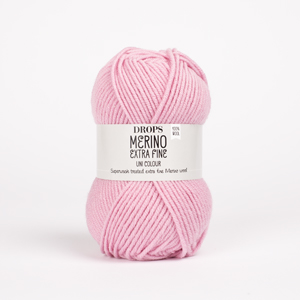
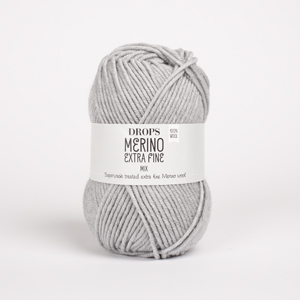
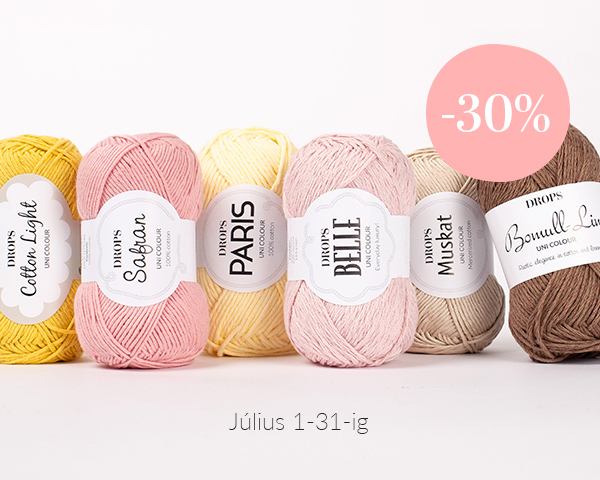



































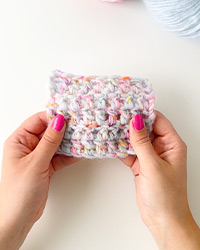
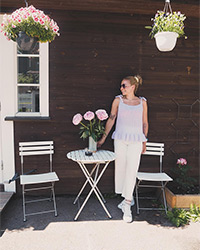
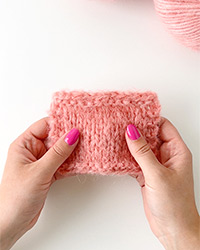
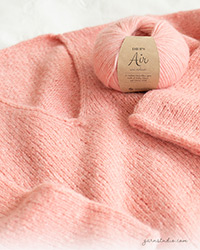


Post a comment to pattern DROPS Baby 20-9
Szívesen vesszük, ha megosztja velünk gondolatait erről a mintáról.
Ha kérdést szeretne feltenni, ügyeljen arra, hogy a megfelelő kategóriát válassza ki, így fegyorsíthatja a válaszadás folyamatát. Það verður að merkja við svæði merktri með *.